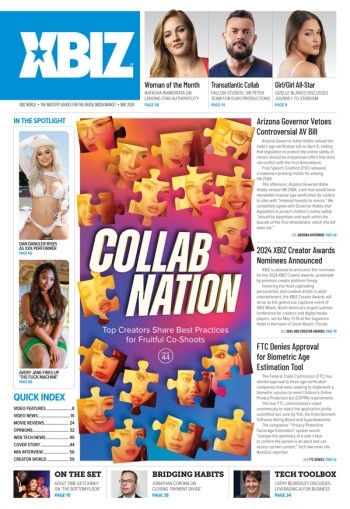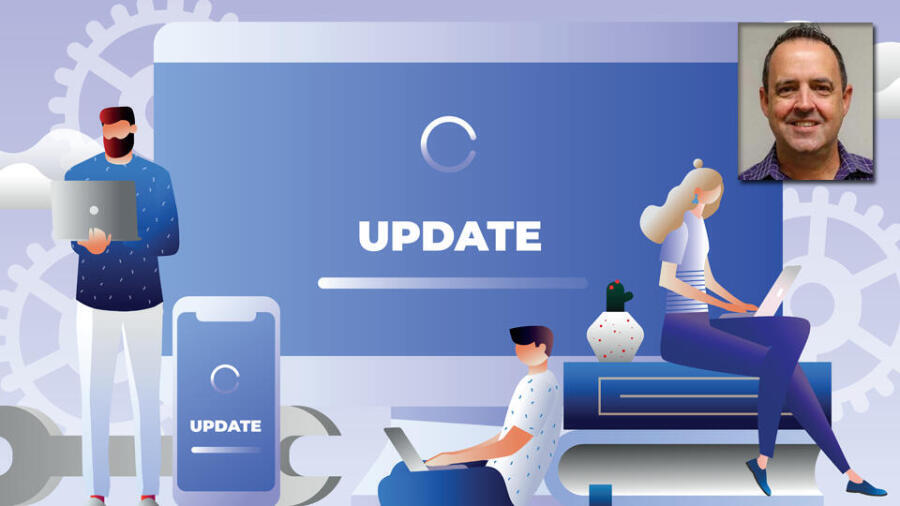It’s the fourth quarter. That means Black Friday, the holiday season — the quarter everyone in retail waits for because that’s when they make the majority of their revenue. It’s the playoffs of retail… the Super Bowl! But while their teams are executing in the stores, the fourth quarter is also when retail leadership begins to look ahead, asking: “Next season, what are we going to change and improve to help us compete? What will make us more efficient? How can we get to know more about our customers?” Every year, I spend this quarter meeting with our clients’ C-level leadership, helping them ponder those questions. Time and again, my one key piece of advice is: Think of technology as a tool to help you achieve operational strategic goals.
Technology is not magic
The fourth quarter is when retail leadership begins to look ahead, asking: “Next season, what are we going to change and improve to help us compete?
First, though, let me tell you what technology is not going to do for you. Technology in and of itself is not going to “fix” anything. It’s not going to automatically make you more efficient. It’s not going to grow your revenue exponentially overnight. The new shiny tech widget you saw at a show is not going to transform your business.
Without a plan and strategic goal in mind, implementing technology will more often than not simply automate chaos. Please read that again and really think about it. If you don’t fix the flaws in your business processes, buying and implementing new technology is nothing more than adding gas to a fire.
So, before jumping on any new tech, sit down with your leadership teams and dig into the core reasons why your business is not as efficient as it could be. What manual processes are eating up labor hours, diminishing associate satisfaction and impairing delivery of the kind of in-store experience you want your customers to have? What information would it help to have about your customers, and what would you do with this information? How can you drive measurable ROI?
Pro tip: Invite your technologist to be a part of all these conversations. Let them listen as you home in on what you want to achieve. Then they can get to work to make sure you’re not automating chaos, but implementing a well-thought-out plan.
Who’s in the loop?
We all know the saying, “The best laid plans…” Technology is no different. There are many reasons why implementations can go awry, but most often it is because the players involved have differing agendas — or because the right players are not even at the table to begin with.
Both internal operations and internal IT personnel need to be consulting with all outside technology partners that may be handling a piece of the puzzle. Everyone involved also needs to consider some key things before your transformation begins: hardware changes, software platform changes, how both will affect existing technologies that are not changing, the overall implementation team and who works for whom, plus ongoing support for the new solution after it is up and running. Let’s dig in a bit.
Hardware changes
So, during your last conversion/implementation, you dropped a ton of coin on IT hardware purchases — servers, PCs, tablets, widgets, etc. — and now you’re thinking, “Whatever the new solution is, it needs to work with our current infrastructure.” I get it. But unfortunately, this is like insisting that every new technology that comes into your home must use a new widget, converter or cable adaptor to make it work with that 40-inch flat-screen TV you paid $4,000 for 10 years ago.
Instead, how about we roll down to Costco and get the new 86-inch flat-screen that has all the updated technology built in, connects in seconds and works like a champ, all for under $1,000? This will mean less labor, faster implementation since everything is compatible, better technology and a successful, stress-free execution. Pro tip: this applies to business tech as well. Stop hugging the cactus and let it go.
Software changes
Many of the same issues apply to software conversions. If you are converting from relatively newer systems, extracting the old data is not hard. Your team should be able to evaluate the level of effort needed to extract your data. Keep in mind that it’s your data, not theirs. If you’re on a 20-year-old program and it’s really difficult to extract the data from the dinosaur you’re keeping alive, guess what? This problem is not going to get better with time! Stop delaying, roll up your sleeves and figure it out. Do it manually if you have to, but don’t be held hostage. In fact, many of today’s technologies can facilitate the extraction of old data.
Do the work
A digital transformation from an old system to a new one is going to require some effort on your part. Most likely you will need to clean up the same processes and data you’ve been bitching about for years, which are most likely causing the problems that sparked the need to change systems in the first place. It is tempting for retail leaders to look to everyone else and say, “Make this transition easy for me.” Salespeople will tell you what you want to hear and, yes, many of the necessary processes can indeed be made easy by the partners and the platforms you choose. But no one knows your business like you do, so when it comes to your industry-specific and business-specific data and processes, this is on you.
I liken this to the big New Year’s commitment everybody makes: “This year, I’m going to get in shape.” You buy a gym membership, Google the latest trendy nutrition plan and hire a personal trainer. Six months later, you look the same and wonder why your fitness team failed you. It’s because you still have to show up and do the work.
Once you do commit to the right hardware and software, and to doing the work to make this change, implement with the entire solution in mind. Encourage the entire team, both internal staff and outside vendors, to take ownership of their own pieces but also collaborate as one unit to support the new solution. These teams can sometimes be at odds with each other, but if you lead with the people impacted first, it will ultimately maximize the operational impact on your customers and employees.
Taking the leap
You’ve done the work, you’ve done the planning, you’ve done the analysis. Time to execute! But wait. Your plan gets put on a shelf like the dusty squeaky penguin in “Toy Story.” Every year, leadership teams step up to face the changes they know they need to make — and at the last minute, they stop. Why? “The timing is bad right now.” “ROI isn’t guaranteed.” “We’re going to put a pin in it.”
Pick the excuse, but here’s the truth bomb: Nothing great has ever been achieved by not taking action. Not in sports, not in relationships, not in business and not in life.
I tell my fellow CEOs all the time that when it comes to implementing new technology, it comes down to one simple calculation. You have to add up every single cost involved. Not just the upfront costs, but all the ongoing costs, labor costs and support costs for the next five years. Now divide that figure by 60 months, then divide again by your number of stores.
Look at that figure and ask yourself, “Do I think that the solution my team and I have put together can either save that much money per month per store, increase revenue by that much per month per store, or a combination thereof? Will it improve my overall brand, customer experience and associate experience enough that we’ll achieve an ‘X’ multiplier of that number and propel our brand to heights we’ve never seen?”
If the answer is leaning toward yes, then stop hugging your cactus. If nothing changes, nothing will change.
Have a great Q4 and a fantastic holiday season. Most importantly, don’t be afraid to take the necessary steps to change for the better in the new year. Like George Michael said: “You gotta have faith!”
Sean Quinn is the CEO of All Point Retail, a retail technology company that offers managed retail commerce to retail businesses. He is a true veteran, both literally and figuratively. Bolstered by years of military experience in a variety of positions and commands, his strategic intelligence background laid the foundation for his passion for business intelligence through technology — especially in the retail arena.






